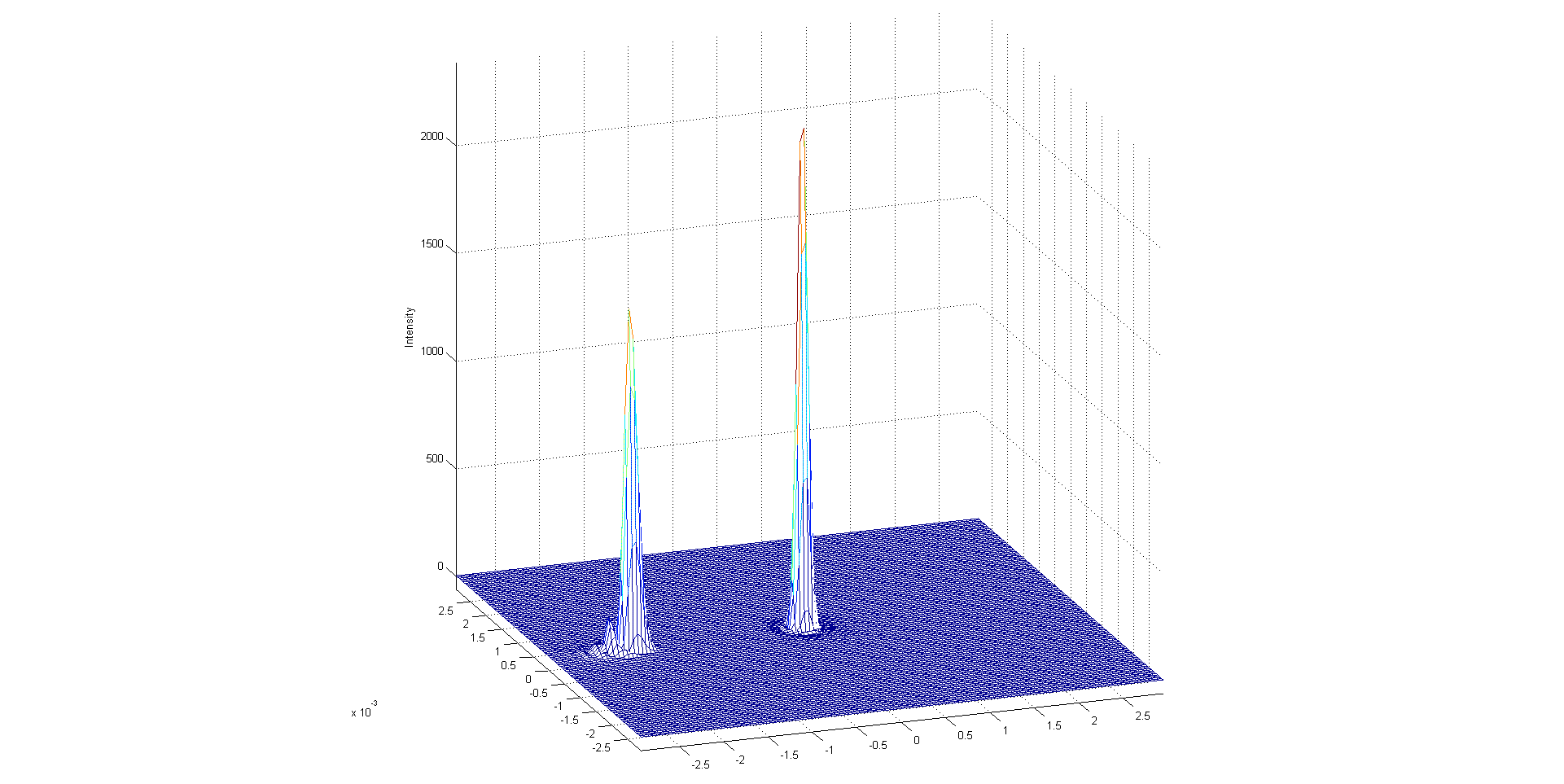Hypersonic flow field around a flight vehicle have shock wave and boundary layer which cause density fluctuation. Aero-optics study optical aberration occurred in flow field. Since optical aberration degrades the beam quality, aero-optics has been studied to increase performance of a camera installed in the flight vehicle. Aero-optical aberration was analyzed and used to complement the image captured by the camera. Previous studies focused on the device to measure aero-optical aberration. First measurement of dynamic aero-optical characteristics was through Malley probe which was developed by Malley et al. (1989) to measure beam jitter in turbulence flow. Later Shack-Hartmann wavefront sensor was used by Yanta et al. (2000) to measure dynamical 2 dimensional wavefront. Yanta et al. installed wedge with optical window in hypersonic blow down type wind tunnel and validated the performance of shack-hartmann wave front sensor. Imaging camera system, X-Y detector was used to measure far-field pattern which is called point spread function (PSF) and was compared with PSF calculated from near-filed phase measurement of Shack-Hartmann wavefront sensor. Direct measured and calculated PSF was quite similar.
The objective of this study is to measure and analyze the aero-optical characteristics in hypersonic flow field around wedge model. Shack-Hartmann sensor was used to measure wavefront and 635 nm diode laser was used as a light source. At first performance of the Shack-Hartmann sensor was calibrated through experiment on optical table. Wedged window with known angle was used as a density gradient and tilt of the beam was calibrated. After the optical table experiment, wedge was installed in a shock tunnel and aero-optical characteristics in mach 7 flow was measured. Experiment configuration is presented in figure 1. Shadowgraph image was acquired simultaneously with wavefront data to characterize the flow field. Pitot tube measured total pressure in front of the model and static pressure was measured on the surface of the wedge. Phase and intensity measured through Shack-Hartmann sensor was transferred to PSF and aero-optical parameter such as Strehl ratio, bore sight error (BSE) and contained energy diameter (CED) was calculated. Ratio between diffraction limited PSF peak intensity, which was acquired before the burst of shock tunnel diaphragm, and experiment acquired PSF peak intensity was used as a strehl ratio. It represent the beam performance degradation through the flow field. BSE, which shows shift of the point source of the beam, is calculated through PSF peak intensity displacement. CED represents blur on the beam and is defined as diameter of certain intensity ratio to total PSF intensity. Through the hypersonic flow field, strehl ratio decreased and BSE existed. CED became larger since beam gained blur.

Figure 1. Aero-optics experiment model in test section

Figure 2. Aero-optical measurement in flowfield
References
Malley M. M., Sutton G. W., Kincheloe N. (1992). Beam-jitter measurements of turbulent aero-optical path differences. Applied Optics, Vol. 31, No.22:4440-4443.
Yanta W. J., Spring III W. C., Lafferty J. F., Collier A. S., Bell R. L., Neal D., Hamrick D., Copland J., Pezzaniti L., Banish M., Shaw R. (2000). Near-and far-field measurements of aero-optical effects due to propagation through hypersonic flows. AIAA Paper, 200-2357,
Jumper E. J., Fitzgerald, E. J. (2001). Recent advances in aero-optics. Progress in Aerospace Sciences, Vol. 37, No.3: 299-339.

